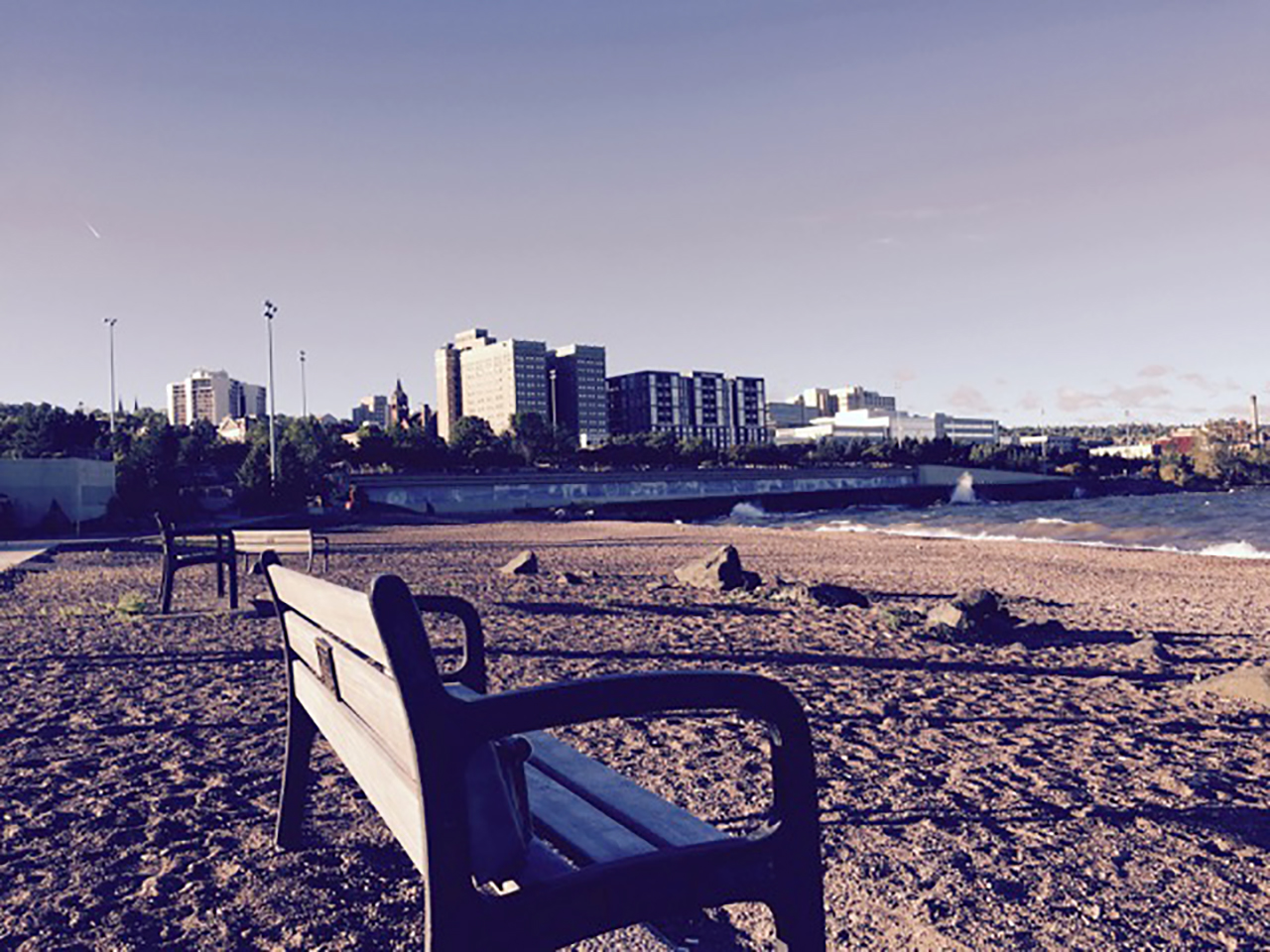
Listening tour gathers ideas and insights from Knight communities
Above: Duluth’s “beach” on Lake Superior overlooks downtown. Photo by Lilly Weinberg.
I am well on my way to completing my initial visits to Knight’s 18 nonresident communities. When I became community foundation’s director earlier this year, I had a simple but strategic plan for how I would visit each of them to learn more about the cities and the community foundations we partner with to carry out our work. I planned to visit our Northern communities in the warmer months and our Southern communities in the fall and winter. The strategy has worked and now the Southern visits are here, with only four communities to go!
A special thank you to the leadership of the community foundations. I was able to see and do so much because of all of you: Holly Sampson from the Duluth Superior Area Community Foundation (Minn.); Molly Kunkel from The Centre Foundation (State College, Pa.); Joy Watkins from Community Foundation of North Florida (Tallahassee, Fla.); Rodger Wilder from Gulf Coast Community Foundation (Biloxi-Gulfport, Miss.); and JoAnn Turnquist from Central Carolina Community Foundation.
Here is some of what I have learned:
Duluth
A community of 85,000 residents, Duluth’s population has almost recovered from its major population loss in the 1980s. Duluth is long past the days when it was grouped with cities such as Flint, Mich. It now draws comparisons to Boulder and other cities on the upswing. Talented 25- to 34-year-olds have steadily moved to Duluth to enjoy its quality of life – a 23 percent increase in the past five years. Voted the No. 1 outdoors community in the country by Outside Magazine, the city’s recreational activities have been cited as a main attraction for talent. However, more can be done. The city has more jobs than people and more diversity for this growth is a priority. With an incredibly homogenous population (90.4 percent white), Duluth has an opportunity to better highlight its quality of life and attract and retain broader groups of people. Finally, the revitalization of the river, a connector of lower-income communities, is critical for Duluth and a main priority for the city.
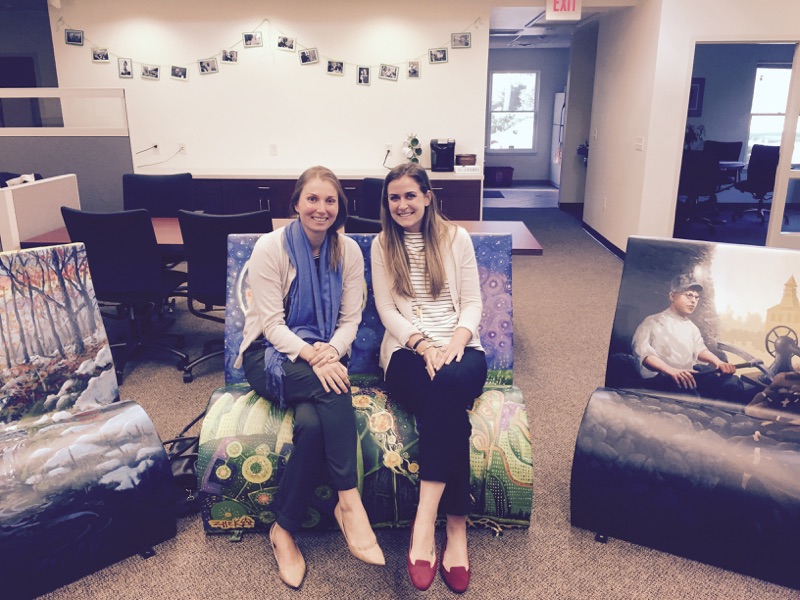
The author with Michelle Huttenhoff, a Knight Foundation program associate, at the Centre Foundation sitting on “book benches.”
State College
State College is a true college town. With a population of 42,000, the city is primarily made up of Penn State University students and faculty. This population constantly churns, with the majority of students leaving immediately upon graduation, though this is beginning to change. The city’s economy primarily depends on the university, and key leaders in the community understand the importance of diversification—and finding ways to retain more talent as students graduate. Eric Barron, the new president of Penn State, understands this too. He has prioritized better connecting the university to the community with a goal to spur sustainable, diversified economic development. There have been tremendous strides in the past few years. The Knight-funded co-working space New Leaf is one example; it’s a space for students, entrepreneurs and community members to use, connected to Penn State and right in the heart of downtown. But there is more to do with entrepreneurship in State College. With the innovation district incubating further along ideas, the university and city have identified a gap for smaller companies. This is critical for keeping students after graduation, cultivating a young professional community in a traditional college town. I am excited to see how Knight can play a role in partnering with the city and university to attract and retain talent in State College.
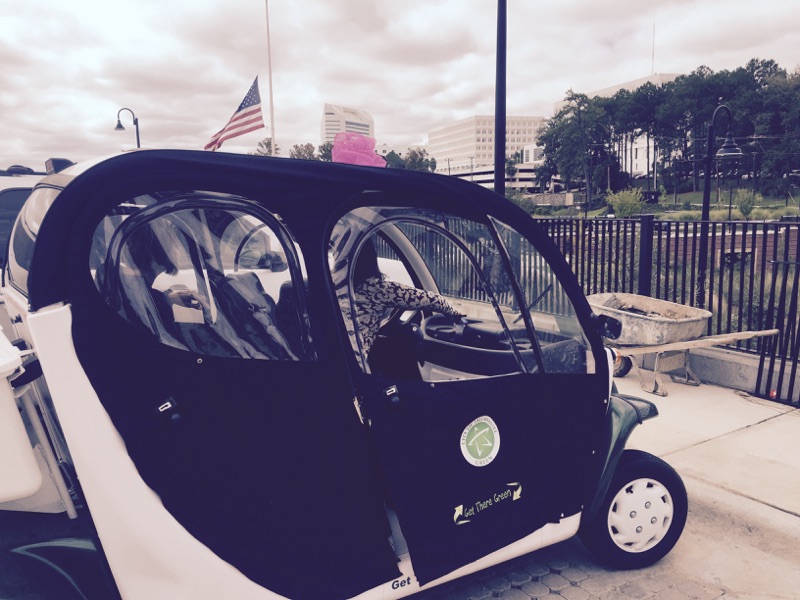
Touring public spaces of Tallahassee with a Smart car. Photo: Lilly Weinberg.
Tallahassee, Fla.
With a buzzing state capital and college students everywhere (a total of eight colleges and universities), Tallahassee has a lot going on. The city boasts 188,000 residents—with a population growing at a faster rate than the rest of Florida. However, what hasn’t historically happened is the connection and capitalization of these anchor institutions to the city. The universities, especially Florida State and Florida A&M universities, produce significant amounts of intellectual property. Faculty, students and other members of the community are leveraging their creations into startups. Florida State President John Thrasher is leading the way, capitalizing on state incentives. At the city level, Mayor Andrew Gillum is focused on hiring tech talent and sourcing companies from the region. Connecting people and neighborhoods through good urban design is also a priority for the city’s planning department. Leaders have lots of ideas that they brought back from the Knight-funded trip to Copenhagen in September this year. For example, the first protected bike lane will be completed soon connecting the downtown to Florida State. Equity issues are also a top priority for the city, such as better connecting the disenfranchised communities bordering the downtown to more successful areas. There is progress being made; for example, recent design investments around Florida A&M have improved the connections for a community that was completely disconnected due to poor design and train tracks.
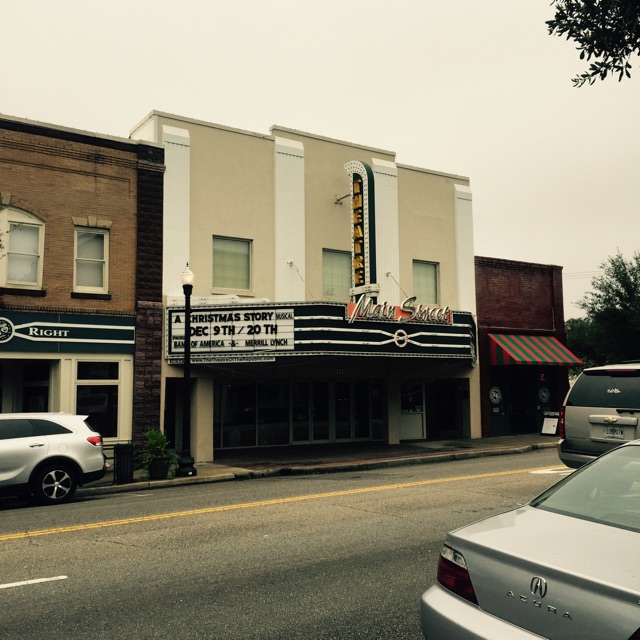
Main
Street Theatre in Conway, S.C., by Lilly Weinberg.
Horry County (Myrtle Beach and Conway), S.C.
The cities of Myrtle Beach and Conway have a total population of 50,000 residents. While Myrtle Beach is primarily a tourist town – with over 14 million visitors a year to the coast – Conway is a landlocked university town. What’s interesting is the potential to better connect the communities, using the talent of Conway and the gorgeous natural resources of Myrtle Beach. That is what community leaders are thinking. Both cities are experiencing an aging population, a lack of a diversified economy and an exodus of college graduates. President Terri DeCenzo of Coastal Carolina University, which has almost 10,000 students in Conway, realizes the importance of this too. Tremendous intellectual property is coming out of Coastal Carolina and President Decenzo believes that this can help build local businesses. Knight funded the Conway Innovation Center to do just that – using businesses and academics to foster new startups that result in new jobs for Horry County. Because of its success, the university is looking to expand, and there is an opportunity to better connect what has become a vibrant downtown with the university. Leaders are also thinking about better connecting Conway to Myrtle Beach, which could help encourage talented professionals to expand into the tourist community.
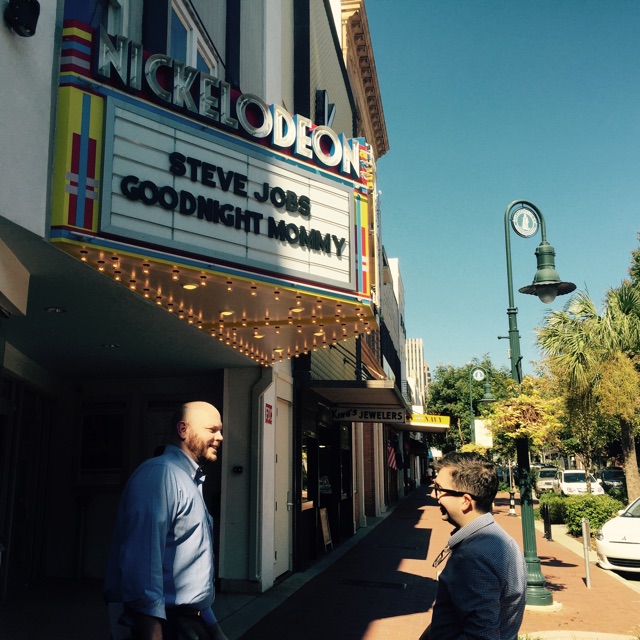
Visiting the Nickelodeon Theatre on Main Street in Columbia. Photo by Lilly Weinberg.
Columbia, S.C.
South Carolina’s state capital and a college town, has a growing population of 135,000. Under the leadership of Mayor Steve Benjamin and President Harris Pastides of the University of South Carolina, there is a lot of potential for economic growth. The university produces a lot of intellectual property and both leaders want to capitalize on it to benefit the greater Columbia community. In fact, the university has an office focused on economic engagement, which connects businesses, industry and entrepreneurs to its many resources to create jobs and accelerate innovation. And it’s working. A startup center provides a thriving entrepreneurial community. Mayor Benjamin is also focused on building Columbia as a city for people, not just cars. As millions of dollars come in to repair infrastructure from the horrific flooding, there is an opportunity to not just fix but improve design, making the city a more connected, livable community. At the mayor’s request, we are moving forward with work by Gehl Studios to create better public spaces downtown. This will be an opportunity to engage the public and decision-makers – focused on recovery – to build communities for people first.
Lilly Weinberg is the program director for community foundations at Knight Foundation. Email her at [email protected] and follow her on Twitter @lillyweinberg.
Recent Content
-
Community Impactarticle ·
-
Community Impactarticle ·
-
Community Impactarticle ·


